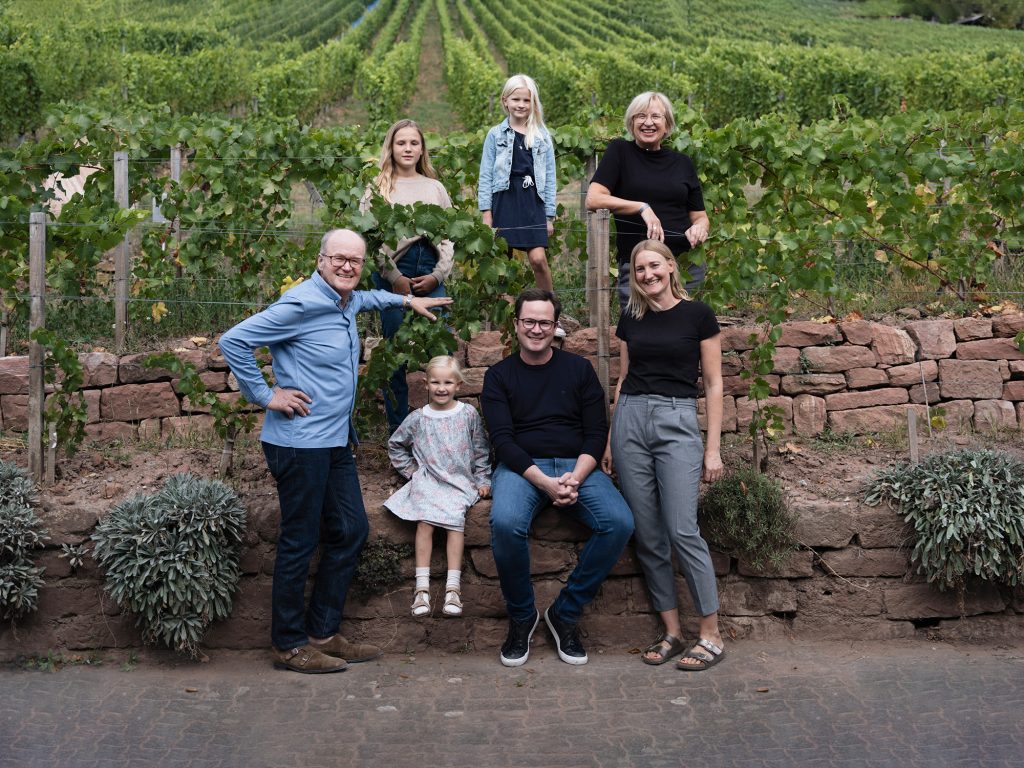Nestled within the rolling hills of Franconia, Germany, Weingut Fürst stands as a living testament to the region’s rich winemaking heritage. With roots dating back to the 17th century, this esteemed winery has weathered the sands of time, evolving into a beacon of excellence under the stewardship of the Fürst family. Join us on a journey through the history of Weingut Fürst as we explore the family’s enduring commitment to crafting exceptional wines in the heart of Franconia.

The Fürst family’s winemaking saga began in the quaint town of Bürgstadt, where, in the 1600s, they planted the first vines, sowing the seeds for a legacy that would span centuries. The fertile soils and unique microclimate of Bürgstadt laid the foundation for the family’s viticultural endeavors, setting the stage for a journey marked by dedication and passion.
Throughout the annals of history, Weingut Fürst faced myriad challenges, from the trials of war to economic uncertainties. However, the family’s unwavering commitment to their winemaking traditions allowed them to navigate these tumultuous times, ensuring the continuation of the Fürst legacy.
As the 20th century unfolded, Weingut Fürst emerged as a driving force behind the renaissance of Franconian wines. Embracing both tradition and innovation, the winery played a pivotal role in elevating the reputation of Franconian wines on both the national and international stage.
At the heart of Weingut Fürst’s success lies its carefully tended vineyards scattered across Franconia. Each vineyard, from the renowned Centgrafenberg to the sunlit slopes overlooking the Main River, contributes unique characteristics to the wines. This chapter celebrates the Fürst family’s commitment to preserving and showcasing the true essence of Franconian terroir.
Weingut Fürst
Bürgstädter Landstraße 1, 63927 Bürgstadt, Franconia, Germany
Current Winemaker: Paul Fürst.
Website: Weingut Fürst | Google Maps: Find Us on Google Maps
The importance of winegrowing and winemaking became evident in the then-Churchman language; from the early 16th century, they have been a part of the Mainz Erzbistum. Here, the fine soils warm up quickly.. The Main river functions as a practical heat storage device in this way. The same is true of the enduringly prominent dry stone mountains that serve as a testament to the remarkable and astounding cultural accomplishments of our ancestors.
The best spots include the Bürgstadter Berg, the Weingutes’ Forst centre, the Hundsrück, the Centgrafenberg, and Klingenberg on the Schlossberg. Only the Spätburgunder is included in the VDP-Lagenklassifikation.GROSSES GEWÄCHS in the Hundsrück and the Schlossberg; this also holds true for the Spätburgunder and the Riesling in the Centgrafenberg.
Centgrafenberg
This historic vineyard is located near the town of Bürgstadt and is renowned for its unique microclimate and limestone-rich soils. Centgrafenberg is particularly known for producing outstanding Spätburgunder (Pinot Noir) wines, characterized by their depth, complexity, and elegant structure.
Schlossberg
Situated in Bürgstadt, Schlossberg is another esteemed vineyard owned by Weingut Fürst. The vineyard’s south-facing slopes and gravelly soils provide ideal conditions for cultivating Riesling grapes, yielding wines with vibrant acidity, expressive fruit flavors, and distinctive mineral notes.
Hundsrück
Located in Bürgstadt, Hundsrück is a vineyard known for its diverse terroir, including limestone, marl, and sandstone soils. This diversity contributes to the complexity and depth of the wines produced from this site, including Spätburgunder, Silvaner, and Müller-Thurgau.
Stein
The Stein vineyard, situated in the Bürgstadt area, benefits from its elevated position and well-drained soils, which are ideal for growing high-quality grapes. This vineyard is known for producing elegant and aromatic white wines, including Silvaner and Riesling, with a distinctive sense of place.
Bürgstadter Berg
This vineyard encompasses a range of slopes and soil types near the town of Bürgstadt. Bürgstadter Berg produces a diverse array of grape varieties, including Spätburgunder, Riesling, and Müller-Thurgau, each expressing the unique characteristics of the terroir.